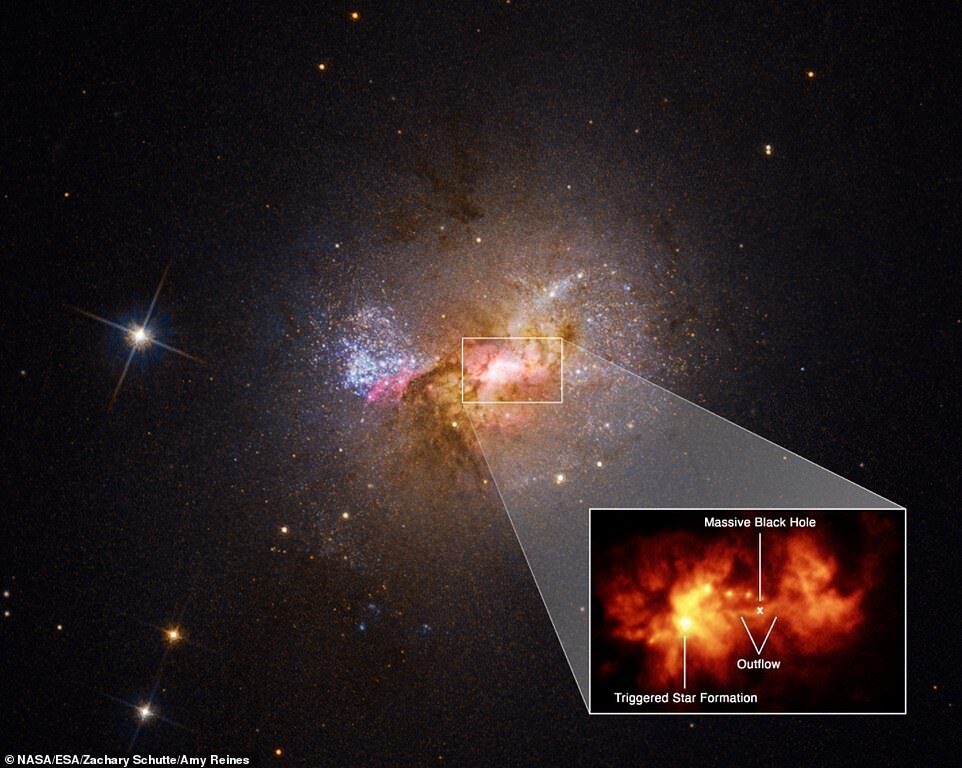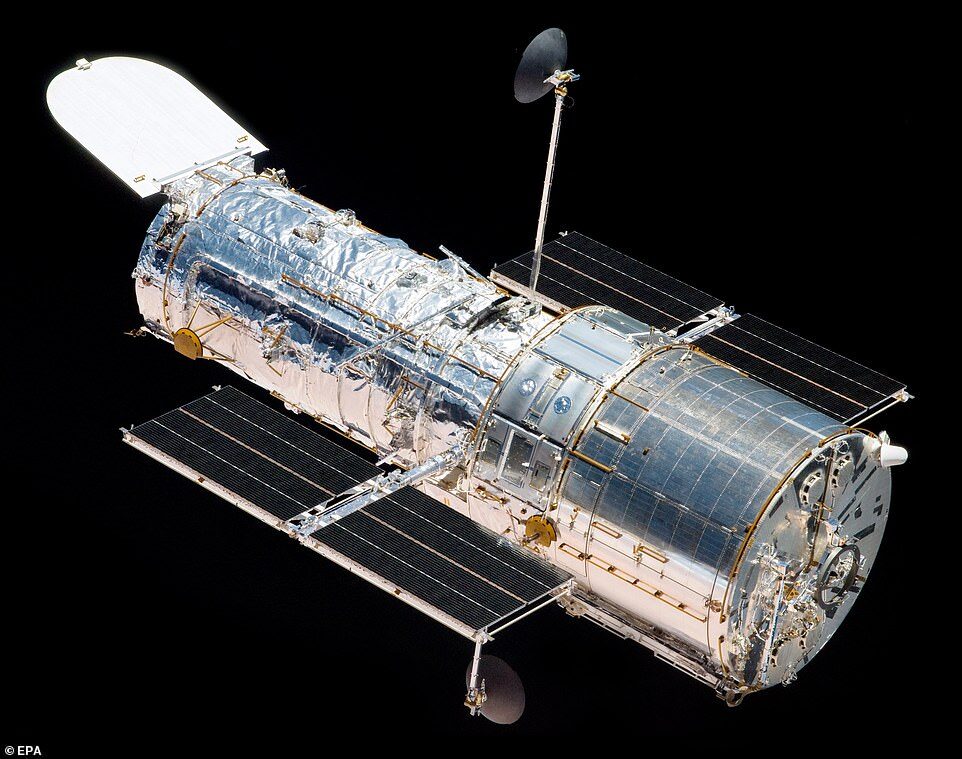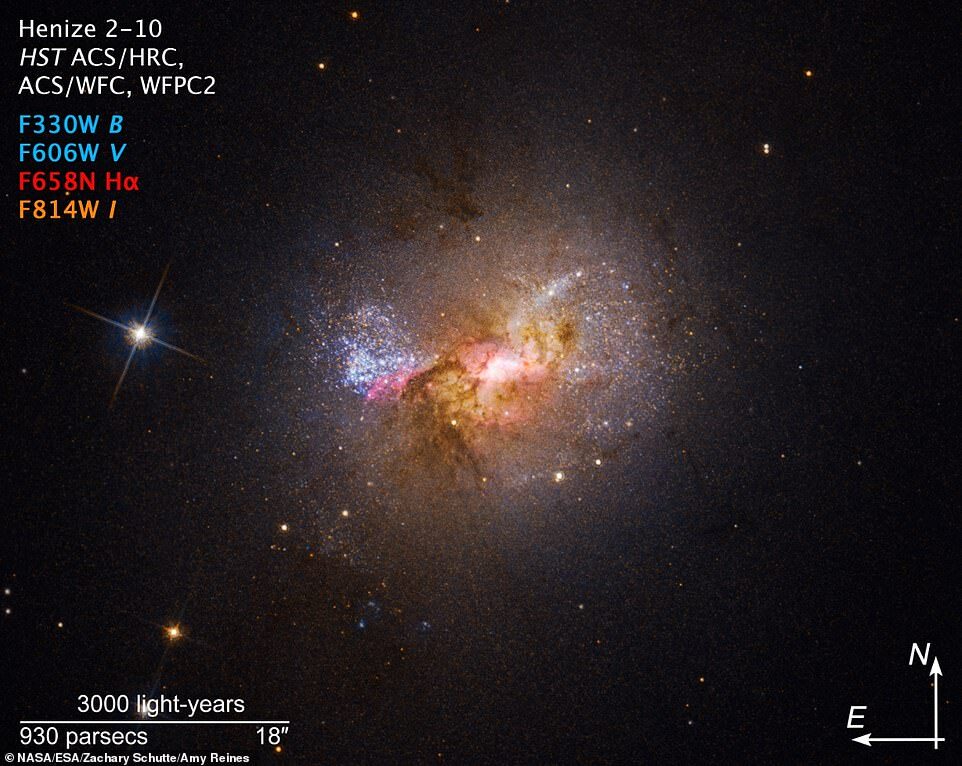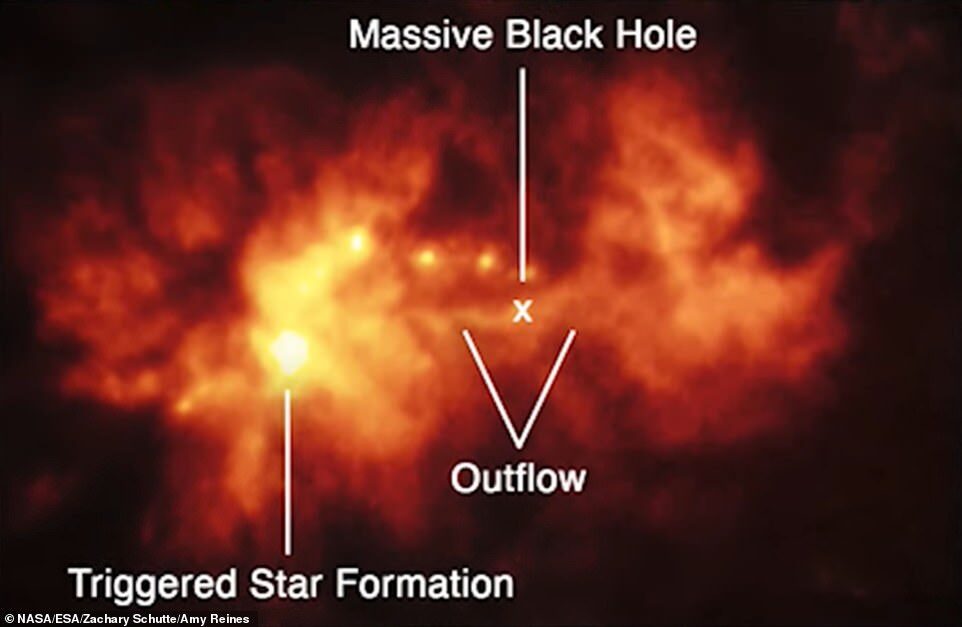
A black hole has been spotted 'giving birth' to stars in a nearby dwarf galaxy - suggesting the voids aren't as violent as previously thought, NASA has revealed.
Black holes are often described as 'destructive monsters' because they tear apart stars, consuming anything that comes too close, and hold light captive. But new evidence from NASA's Hubble Space Telescope shows a black hole at the heart of the dwarf galaxy Henize 2-10 that's creating stars, not gobbling them up.
The black hole is apparently contributing to a 'firestorm' of new star formation that's taking place in Henize 2-10, which is 30 million light-years away in the southern constellation of Pyxis.
The study of Hubble data was conducted by Zachary Schutte and Amy E. Reines, two researchers at Montana State University's Department of Physics and announced by NASA.

'The additional surprise was that, rather than suppressing star formation, the outflow was triggering the birth of new stars.'
Henize 2-10 is about 10 per cent of the size of the Milky Way and contains only one-tenth the number of stars found in our galaxy.
It also has a central black hole, experts say, based on observed dual emissions of X-ray and radio waves.

Hubble imaging and spectroscopy of Henize 2-10 show a flow of plasma (ionised gas) 'like an umbilical cord' that stretches from the black hole. This ionised gas slams into a another, dense cloud of gas near the edge of the dwarf galaxy, triggering the cloud into forming clusters of stars.
The distance separating the black hole and the star formation region at the edge of the dwarf galaxy is still hefty to the human mind - about 230 light years - but less so in astronomical terms.
Hubble spectroscopy shows the plasma outflow was moving about 1 million miles per hour, slamming into the dense gas 'like a garden hose hitting a pile of dirt and spreading out'.
This is the opposite effect of what's seen in larger galaxies, where material falling toward the black hole is whisked away by surrounding magnetic fields, forming blazing jets of plasma moving at close to the speed of light.
Gas clouds caught in the jets' path would be heated far beyond their ability to cool back down and form stars. But with the less-massive black hole in Henize 2-10, and its gentler outflow, gas was compressed just enough to precipitate new star formation.

They observed dual emissions of X-ray and radio waves, which are often associated with black holes.
At the time, Henize 2-10 sparked debate among astronomers as to whether dwarf galaxies were home to black holes proportional to the supermassive black holes found in the hearts of larger galaxies.
Other astronomers thought that the observed radiation was more likely being emitted by a 'supernova remnant', the remains from an explosion of a massive star at the end of its life.
But data from Hubble - which is still operational despite NASA's recent launch of the more powerful James Webb telescope - unequivocally shows a black hole, according to Reines.
More information: Schutte, Z., Reines, A.E. Black-hole-triggered star formation in the dwarf galaxy Henize 2-10. Nature 601, 329-333 (2022). doi.org/10.1038/s41586-021-04215-6



... and it's also the only black hole within a black hole. [Link]